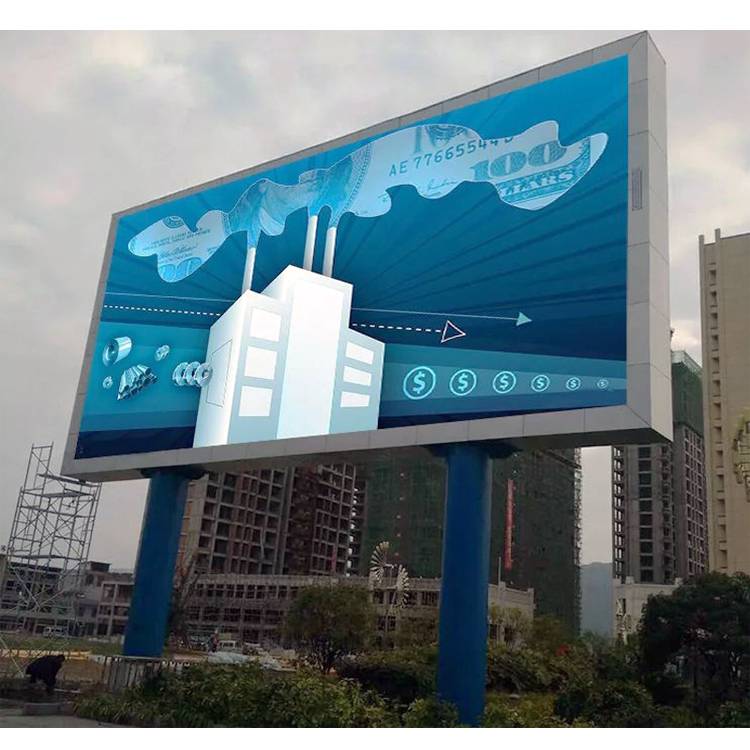
The reason why outdoor LED displays require IP65 rating
Outdoor environments are full of unpredictable challenges — from rain and dust storms to extreme temperatures. In such settings, LED displays must be more than just bright and vibrant; they must also be durable and weather-resistant. That’s where IP ratings come into play. In this article, we’ll explain what IP65 means, why IP ratings matter, and how to choose the right protection level for outdoor LED displays.
1. What Is an IP Rating?

IP (Ingress Protection) rating is an internationally recognized standard established by the International Electrotechnical Commission (IEC). It measures how well an electrical device is protected against the intrusion of solid objects (like dust) and liquids (like rainwater).
An IP rating usually consists of two numbers:
- First digit (0–6): Protection against solid objects (e.g., dust, sand).
- Second digit (0–9): Protection against liquids (e.g., water splashes, immersion).
2. Understanding IP65: What Does It Mean?

An IP65 rating specifically offers:
- 6 (Dust Protection): Complete protection against dust. No dust can penetrate the enclosure, ensuring optimal internal performance.
- 5 (Water Protection): Protection against water projected from a nozzle (6.3mm) from any direction. Limited water ingress is permitted without harmful effects.
In simpler terms, an LED display with an IP65 rating is:
1.Fully dust-tight, ensuring that fine particles like sand or pollution do not affect the components.
2.Water-resistant against low-pressure water jets and heavy rain, but not designed for complete submersion or direct exposure to high-pressure water.
Example:
An IP65-rated LED billboard can confidently operate in heavy rainstorms, but it should not be installed underwater or directly facing ocean waves without additional protection.
3. Why IP Ratings Matter for Outdoor LED Displays

Outdoor displays face constant exposure to:
- Rain, snow, and ice
- Wind-blown dust and sand
- UV radiation from the sun
- Extreme heat and freezing temperatures
Without a sufficient IP rating, moisture or debris can seep into the LED modules and control systems, leading to:
- Short circuits
- Display malfunctions
- Corrosion of internal components
- Reduced operational lifespan
Therefore, selecting the appropriate IP rating isn’t just about performance — it’s about protecting your investment.
4. Recommended IP Ratings for Outdoor LED Displays

Different outdoor environments require different levels of protection. Here’s a quick breakdown:
Environment Type Recommended IP Rating Description
| Environment Type | Recommended IP Rating | Description |
|---|---|---|
| Typical urban outdoor (buildings, billboards) | IP65 | Protection against rain and dust in most city environments. |
| Coastal areas, heavy rain regions | IP66 | Withstands powerful water jets, salt spray, and humid conditions. |
| Flood-prone zones, special installations (e.g., underwater displays) | IP67/IP68 | Temporary or permanent water immersion capability. |
5. Beyond IP Ratings: Other Key Factors for Outdoor LED Displays
While the IP rating is crucial, it’s only part of what makes a good outdoor LED screen. Other essential factors include:
Brightness:
A minimum of 5,000 nits is recommended to maintain visibility under direct sunlight.
For locations with intense sunlight, even higher brightness levels may be necessary.
Operating Temperature Range:
Ensure the screen can operate safely between -20°C and 50°C (-4°F to 122°F) or even wider if needed.
UV Protection and Anti-Corrosion:
Special coatings prevent material degradation from prolonged sun exposure and salty air.
Heat Dissipation Design:
Efficient thermal management extends LED lifespan and ensures stable performance during hot weather.
Certifications:
Choose products that comply with CE, RoHS, FCC, or equivalent certifications to guarantee international quality standards.
6. How to Choose the Right Outdoor LED Display
When selecting an outdoor LED display, ask yourself the following:
1.Where will it be installed?
City square? Beachfront? Stadium?
2. What kind of weather conditions will it face year-round?
Regular rain vs. typhoon seasons vs. desert heat.
3. Is the display fixed or mobile?
Moving LED trailers or rental screens may need more robust waterproofing.
4. What is the expected lifespan?
Invest in higher protection if the display needs to last for many years without major maintenance.
Choosing a screen based only on the initial price may lead to higher replacement or repair costs later. A properly protected LED display brings lower total cost of ownership (TCO) over time.
7. Conclusion
Choosing the right IP rating for an outdoor LED display is crucial for ensuring reliable performance and long-term durability. An ip65 is sufficient for most standard outdoor applications, offering strong protection against dust and rain.
However, if your installation site faces extreme conditions, consider upgrading to IP66 or even IP67/IP68 models.
Remember, when it comes to outdoor LED displays, it’s not just about the IP rating. Pay attention to brightness, temperature range, UV resistance, and product certifications to guarantee you’re making a smart, future-proof investment.
With the right protection, your outdoor LED screen will shine brightly, rain or shine, for years to come.
Quick Takeaways
IP65 ensures full dust protection and water resistance to rain and splashes.
For harsher climates (heavy storms, coastal areas), opt for IP66 or higher.
Prioritize high brightness (≥5000 nits), wide temperature tolerance, UV protection, and certifications.
Investing in the right outdoor LED display now saves you time, money, and maintenance in the future.